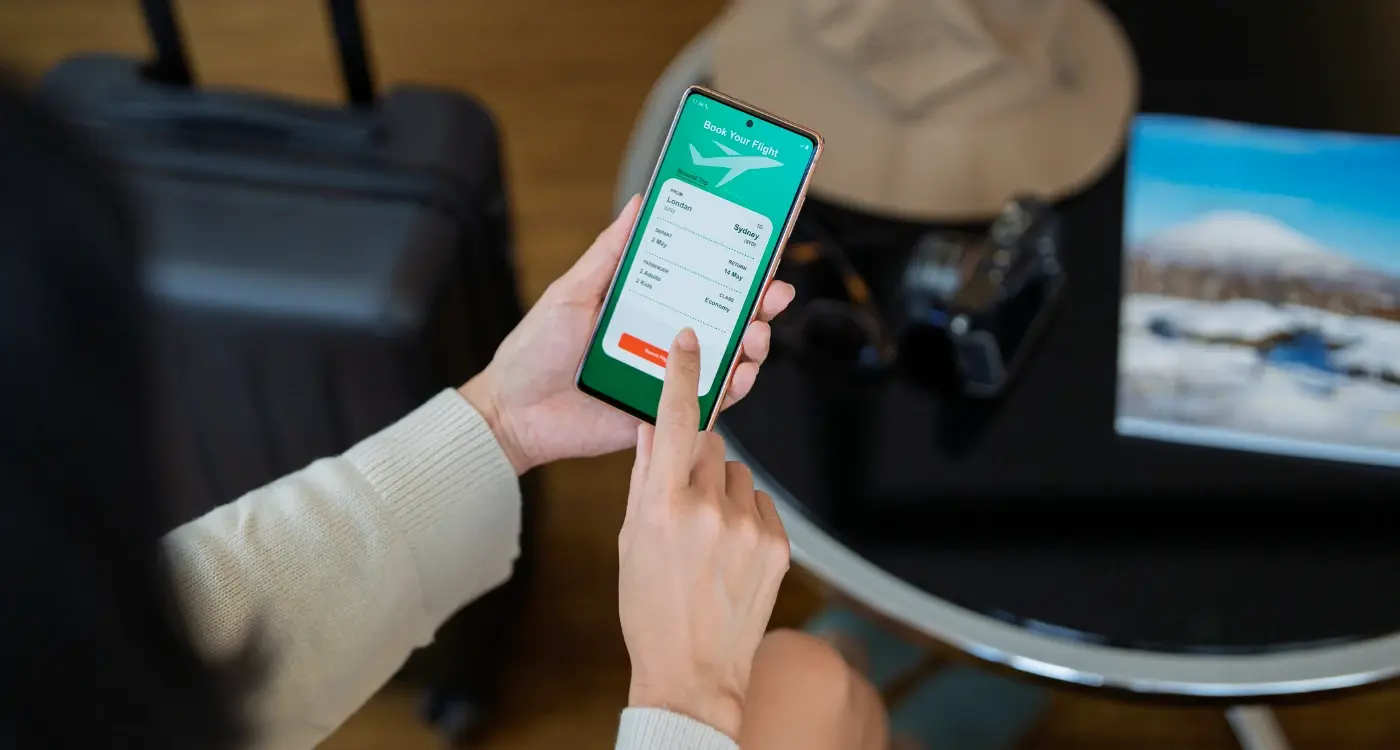How Do I Make My App Compliant With Different Countries' Data Laws?
Have you ever wondered what happens to all the personal information your mobile app collects from users around the world? If you're building an app that people in different countries will use, you're about to discover that data protection isn't just a nice-to-have feature—it's a legal requirement that varies dramatically depending on where your users live.
I've watched countless app developers get blindsided by international privacy laws. They build something brilliant, launch it globally, then suddenly find themselves facing hefty fines or having to pull their app from entire markets. The truth is, every country has its own rules about how personal data should be handled, and these rules are getting stricter by the day.
Whether you're collecting email addresses, tracking location data, or storing payment information, you're dealing with personal data that's protected by law. Europe has GDPR with its massive fines; California has CCPA with its strict consent requirements; countries across Asia-Pacific are rolling out their own comprehensive privacy regulations. Each one comes with different rules about consent, data storage, user rights, and penalties for getting it wrong.
The cost of non-compliance isn't just financial—it can destroy user trust and damage your brand reputation permanently
The good news? You don't need to become a legal expert overnight. This guide will walk you through the major international regulations affecting mobile apps, show you practical ways to build compliance into your app from day one, and help you work effectively with legal teams. By the end, you'll understand exactly what it takes to make your app compliant across different markets whilst still delivering a great user experience.
Understanding Global Data Protection Laws
Data protection laws aren't just fancy legal documents that lawyers like to argue about—they're the rules that protect people's personal information when they use your app. Think of personal data as anything that could identify someone: their name, email address, location, or even how they behave inside your app.
The tricky bit is that every country has its own approach to protecting this data. Europe takes privacy very seriously with GDPR, which has strict rules about getting permission before collecting data. The United States is more relaxed in some areas but has specific laws for things like children's data and health information. Meanwhile, countries like China and India are developing their own comprehensive privacy frameworks that app developers need to follow.
Why Different Countries Have Different Rules
Each region's laws reflect their cultural values and government priorities. European laws focus heavily on individual rights and giving people control over their data. American laws tend to be sector-specific—there are special rules for healthcare, finance, and children's apps. Asian countries often balance privacy with economic development and national security concerns.
The Challenge for App Developers
Here's where it gets complicated for us app developers. Your app might be built in one country, hosted on servers in another, and used by people all over the world. This means you could be subject to multiple data protection laws at once. A shopping app created in London but used by someone in California might need to comply with both GDPR and California's privacy laws. It's not enough to just follow the rules where your business is based—you need to think about where your users are too.
GDPR and European Union Requirements
The General Data Protection Regulation is probably the most talked-about privacy law in the world—and for good reason. It affects any mobile app that processes personal data of EU residents, regardless of where your company is based. That means if someone in France downloads your app, you need to follow GDPR rules.
GDPR treats personal data very seriously. Personal data includes obvious things like names and email addresses, but also device identifiers, IP addresses, and location data. Basically, if you can identify someone from the information, it's personal data under GDPR.
Key GDPR Requirements for Mobile Apps
Your app must have a clear legal basis for processing personal data. The most common ones for mobile apps are consent (users actively agree) and legitimate interests (you have a good business reason). You'll also need to be transparent about what data you collect and why—no hiding important information in tiny text.
Always implement consent mechanisms before collecting any personal data. Pre-ticked boxes don't count as valid consent under GDPR.
Users have several rights that your app must support. They can ask to see their data, correct mistakes, delete their information, or move their data to another service. You have one month to respond to these requests, so build systems that can handle them efficiently.
Technical and Organisational Measures
GDPR requires "appropriate technical and organisational measures" to protect personal data. For mobile apps, this means:
- Encrypting data both in transit and at rest
- Implementing access controls and authentication
- Regular security testing and updates
- Staff training on data protection
- Documented processes for handling data breaches
If you experience a data breach that poses a risk to people's rights, you must notify the relevant supervisory authority within 72 hours. High-risk breaches also require notifying affected users directly.
Data Laws in North America
North America's approach to data protection is quite different from Europe's blanket GDPR approach—it's more of a patchwork system with different rules for different situations. The United States doesn't have one big federal privacy law that covers everything; instead, it has sector-specific laws that focus on particular industries or types of data.
At the federal level, you'll need to know about laws like COPPA, which protects children under 13, and HIPAA for health information. But here's where it gets tricky for app developers—individual states are creating their own comprehensive privacy laws. California led the charge with CCPA (California Consumer Privacy Act), which gives people rights similar to GDPR but with American flavour.
State-Level Variations
California's CCPA is probably the most comprehensive state law you'll encounter. It gives users the right to know what personal information is collected, delete their data, and opt out of having it sold to third parties. The law applies to businesses that collect data from California residents—not just companies based in California.
Other states like Virginia, Colorado, and Connecticut have passed their own privacy laws too. Each one has slightly different requirements, which makes compliance challenging for app developers. You can't just follow one rulebook and call it done.
Canada's Approach
Canada has PIPEDA (Personal Information Protection and Electronic Documents Act) at the federal level, plus provincial laws in places like British Columbia, Alberta, and Quebec. Quebec's Law 25 is particularly strict and shares many similarities with GDPR. Canadian law requires clear consent for data collection and gives people rights to access and correct their information.
The key takeaway? North American data laws are fragmented, and you'll need to understand which specific laws apply to your app based on where your users are located.
Asia-Pacific Privacy Regulations
The Asia-Pacific region presents a fascinating mix of privacy laws that can make your head spin if you're not prepared. Each country has taken its own approach to data protection, and frankly, some are stricter than others. Japan leads the pack with its Act on Protection of Personal Information (APPI), which has been strengthened over recent years to align more closely with international standards like GDPR.
Australia's Privacy Act is another major player in this space—it covers any mobile app that handles personal information of Australian users, regardless of where your business is based. The Australian Privacy Principles (APPs) within this act are particularly relevant for mobile app developers because they govern how you collect, use, and disclose personal information.
Key Regional Players
Singapore's Personal Data Protection Act (PDPA) is worth paying attention to, especially if you're targeting Southeast Asian markets. It requires explicit consent for data collection and gives users the right to withdraw that consent at any time. South Korea takes things a step further with its Personal Information Protection Act (PIPA), which includes some of the world's strictest data localisation requirements.
The challenge with Asia-Pacific privacy regulations isn't just understanding each law individually—it's figuring out how they interact when your mobile app operates across multiple jurisdictions in the region.
China operates under completely different rules with its Cybersecurity Law and Personal Information Protection Law (PIPL). Data localisation is mandatory for many types of information, and cross-border data transfers require government approval. India's Digital Personal Data Protection Act is still evolving, but it's shaping up to be comprehensive legislation that will affect most international mobile apps serving Indian users.
Key Compliance Principles for Mobile Apps
After working with hundreds of mobile apps over the years, I've noticed that developers often get overwhelmed by data compliance requirements. The good news? Most privacy laws share common principles that make compliance much simpler than it first appears.
The foundation of any compliant mobile app starts with transparency. Users need to understand what data you're collecting and why you're collecting it—before they hand it over. This means clear privacy notices written in plain English, not legal jargon that requires a law degree to decipher.
Core Principles Every App Must Follow
Data minimisation sits at the heart of modern privacy law. You should only collect the information you actually need for your app to function properly. If you're building a weather app, you probably don't need access to someone's contacts list. Simple as that.
- Collect only what you need for your app's core functionality
- Get proper consent before processing personal data
- Allow users to withdraw consent easily
- Implement strong security measures to protect user data
- Provide users with access to their personal information
- Delete data when it's no longer needed
Purpose Limitation and User Control
Users should always feel in control of their personal information. This means giving them genuine choice about what data they share and how you use it. You can't collect location data for navigation purposes and then secretly use it for advertising without telling them.
The principle of purpose limitation means you can only use personal data for the specific reasons you told users about when you collected it. Want to use it for something else later? You'll need to ask permission again.
Building Privacy-First App Features
Privacy-first design isn't just about ticking boxes—it's about building trust with your users from day one. When you design your mobile app with privacy at its core, you're not only meeting international regulations but creating something people actually want to use. And let's be honest, users are getting pretty savvy about their data these days.
The trick is to think about privacy before you write a single line of code. This means collecting only the data you absolutely need, asking for permissions at the right moment, and being transparent about what you're doing with user information. No one likes being bombarded with permission requests the second they open an app!
Core Privacy Features Every App Needs
- Clear consent mechanisms that explain exactly what data you're collecting
- Easy-to-find privacy settings within the app interface
- Data deletion options that actually work when users request them
- Minimal data collection—only gather what's absolutely necessary
- Secure data storage with proper encryption methods
- Regular data audits to remove information you no longer need
Build a 'Privacy Dashboard' where users can see exactly what data you've collected about them and delete it with one tap. This goes way beyond what most privacy laws require and shows you really care about user rights.
The beauty of privacy-first development is that it forces you to think more carefully about your app's functionality. You end up building leaner, more focused features because you can't just hoover up data and figure out what to do with it later. Your users will thank you for it—and so will the regulators when they come knocking.
Working with Legal Teams and Documentation
Getting lawyers involved in your app project might feel like opening Pandora's box, but trust me—it's one of the smartest moves you can make. I've worked on projects where legal advice came too late, and the headaches that followed weren't pretty. The good news is that most data protection lawyers understand mobile apps better than they used to, which makes conversations much more productive.
Start by finding a lawyer who specialises in data protection rather than general commercial law. They'll understand the nuances of GDPR, CCPA, and other regulations without needing a crash course in mobile development. When you brief them, be specific about what data your app collects, how it's processed, and where it's stored. Don't just say "user data"—explain whether you're collecting location data, device identifiers, or personal preferences.
Creating Your Legal Documentation
Your privacy policy isn't just a box-ticking exercise; it's a legal document that users will actually read when something goes wrong. Work with your legal team to write it in plain English rather than impenetrable legalese. The same goes for your terms of service and cookie policies.
Keeping Records and Evidence
Documentation goes beyond public-facing policies. You'll need internal records showing how you handle data requests, what security measures you've implemented, and how you've assessed privacy risks. Think of this as your compliance insurance policy. If regulators come knocking, having detailed records can be the difference between a warning letter and a hefty fine. Keep everything organised and accessible—future you will thank present you for this attention to detail.
Conclusion
Making your mobile app compliant with different countries' data laws isn't just about ticking boxes—it's about building trust with your users from day one. I've seen too many app developers treat privacy compliance as an afterthought, only to face hefty fines or worse, lose their users' confidence entirely.
The good news? You now understand the main international regulations that affect mobile apps. GDPR covers Europe, CCPA handles California, and countries across Asia-Pacific have their own specific requirements. But here's what I've learnt after years in this business: if you build your app to meet the highest standards from the start, you'll save yourself countless headaches later.
Think of privacy compliance as part of your app's foundation, not something you add on afterwards. Build those consent mechanisms properly, make your privacy policy clear and accessible, and give users real control over their data. Your legal team will thank you for it—and more importantly, your users will trust you with their information.
The rules will keep changing; new laws will appear, and existing ones will get updates. But if you've built your app with privacy-first principles, adapting becomes much easier. You won't be scrambling to redesign core features because you already thought about data protection from the beginning. That's the difference between apps that survive regulation changes and those that don't.
Share this
Subscribe To Our Learning Centre
You May Also Like
These Related Guides

What Legal Issues Should I Consider When Building a Travel Booking App?

Do I Really Need Terms of Service for My App?



